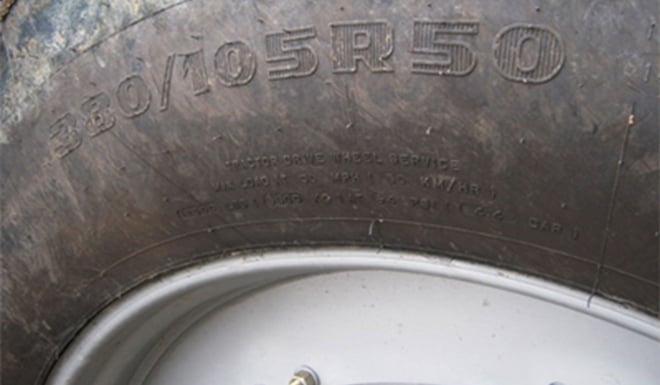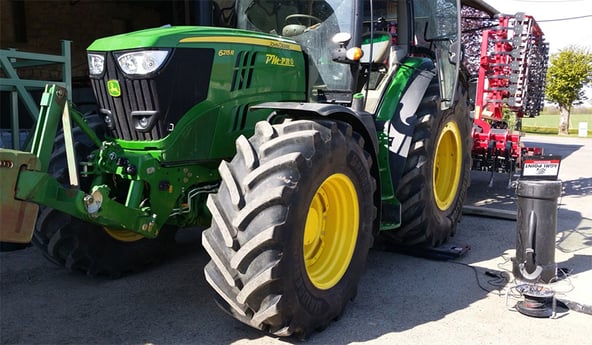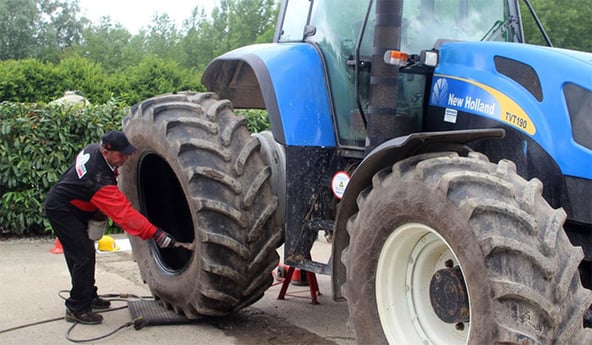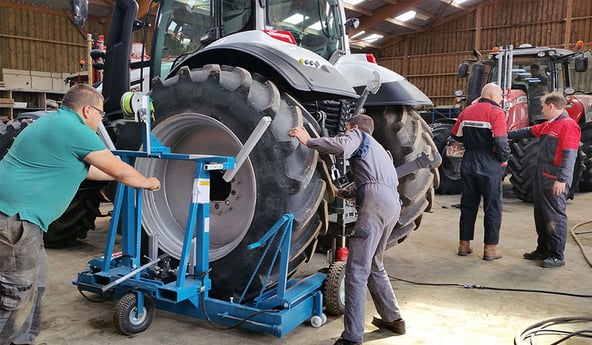VF, IF, NRO, A8, 460 / 85 R 34... These series of digits and letters are not always easy to understand, but they are very important and by not understanding them you can make mistakes which could have serious financial consequences, as you may have to replace an axle earlier than planned, which would reduce your results.
So, what do these indications really mean and are they so important? To find out, here are all the secrets that your tractor tyres have been hiding:
Do you really understand all of the indications on your tractor tyres?
These indications help you to work more effectively, they guide you towards optimum use of your tyres. By complying with the load index for agricultural tyres you will increase their lifespan, by complying with the speed rating you will avoid accidents, by being aware of the manufacturing year you can better estimate the date on which your tyres will need to be replaced, etc.
Tractor tyre size
The size indications can vary depending on various criteria: expressed in inches or in millimetres, different depending on the size of the rim, the width of the tyre or the series.
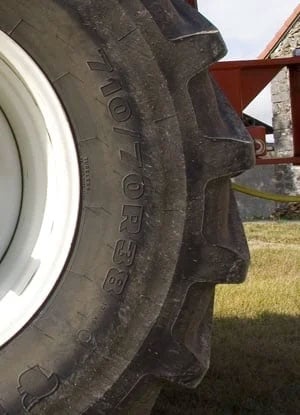
1. Tyre cross-section width
For example:
16.9 R 30 or 480/70 R 30
or 18.4 R 34 or 460/85 R 34
The figures with a decimal point 16.9 or 18.4 represent the cross-section width (distance between the left sidewall and the right sidewall of the same tyre) expressed in inches (1 inch = 25.4 mm). If the distance is indicated in inches this shows either that your tyre is old, or that it doesn’t come from Europe.
The figures 480 or 460 represent the same thing, the tyre’s cross-section width (distance between the left sidewall and the right sidewall of the same tyre) in millimetres (more likely on recent tyres).
2. The rim diameter
Using the same example:
16.9 R 30 or 480/70 R 30 or 18.4 R 34 or 460/85 R 34
The figures 30 or 34 represent the size of the sidewall in inches (1 inch = 25.4 mm).
3. The farming tyre series
This corresponds to the height of the tyre sidewall.
Using the same example:
16.9 R 30 or 480/70 R 30 or 18.4 R 34 or 460/85 R 34
The figures 70 or 85 represent the series expressed in percent.
This is the ratio between the height of the sidewall and the cross-section width, the following series exist: 50, 55, 60, 65, 70, 75, 80, 85, 90, 95, 100, 105.
4. The type of tyre casing
Using the same example:
16.9 R 30 or 480/70 R 30 or 18.4 R 34 or 460/85 R 34
The letter R corresponds to a RADIAL agricultural tyre structure.
When there is a D, or if there is no letter indication, the tyre has a diagonal structure.
The agricultural tyre load
This is a maximum load reference for a pressure of 1.6 bar and often associated with a speed rating. The load indexes are generally expressed from 100 to 200.
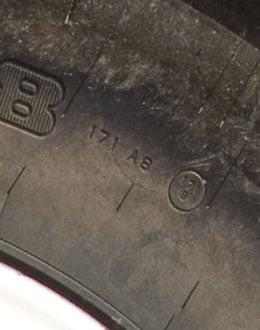
Load index for an agricultural tyre
For example:
- index 100 = 800 kg load
- index 101 = 825 kg load
- index 102 = 850 kg load ...
- index 171 = 6150 kg load ...
Be aware that you can work with different pressure levels than 1.6 bar, which will have different implications on the maximum load. One tyre can have several load indexes, each one associated with a different speed rating.
Recommended driving speed for a farming tyre
The speed rating is indicated either with a letter alone or with a letter and a figure, it corresponds to the maximum speed for a maximum load index.
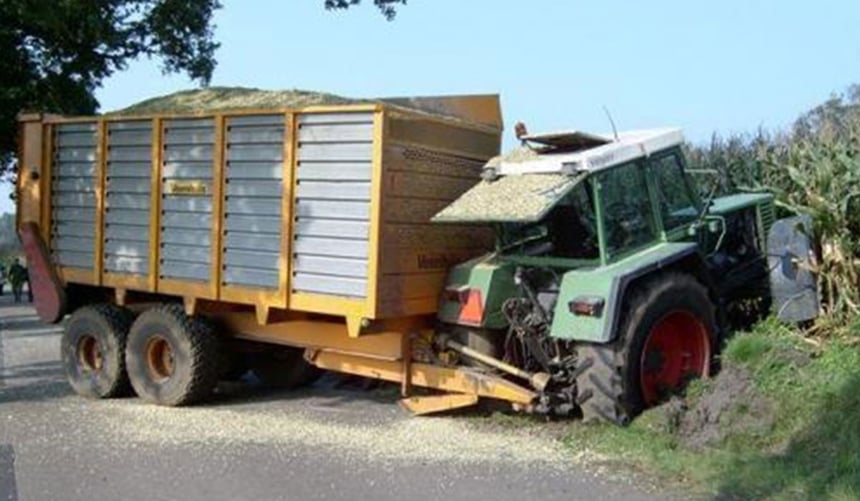
Speed rating
For example:
- rating A2 = 10 Km/h
- rating A3 = 15 Km/h
- rating A4 = 20 Km/h
- rating A5 = 25 Km/h
- rating A6 = 30 Km/h
- rating A7 = 35 Km/h
- rating A8 = 40 Km/h
- rating B = 50 Km/h
- rating D = 65 Km/h
Be aware that you can work with different pressure levels than 1.6 bar which will have different implications on speed depending on the maximum load.
Manufacturing date of an agicultural tyre
The date indication is a series of 4 figures, they are very useful if buying second-hand tyres.
Year of construction
For example:
4012 or 1012 or 3010 or 1595 ...
The first two figures indicate the week number and the next two, the year itself.
For 4012, the tyre was made in the fortieth week of the year 2012,
for 3010, it was the thirtieth week of the year 2010…
Other indications on your tyres
Some indications inform you about the tyre quality or the mounting possibilities.
References: NRO, VF, IF, CFO
- NRO TYRE means “Narrow Rim Option”, which means that you can install this tyre on an optional rim size
- IF TYRE means “Increased Flexion”, which means that the casing of these tyres has flexible sidewalls, which allow you to increase the load by 20%
- VF TYRE means “Very high Flexion”, which means that this low-pressure tyre (0.8 bar) accepts a high level of distortion of its sidewalls. This enables you to avoid soil compaction, and to increase the load by 40%, and removes the need to adapt the pressure according to your speed (identical pressure for fields/road)
- CFO TYRE means “Cyclic Field Operation”, which means that your CFO tyre was designed to carry an occasional overload of + 55% (combine harvesters)
To find out more about the techniques for increasing your farm’s profitability, the tyre tractor Experts suggest that your download for free our full eBook on the subject:
Most people who read this article have also read some of the following articles:
- 5 essential techniques to optimise your agricultural tyres
- Info to help you know your agricultural tyres better and make savings
- Do you know the rules for storing your farm tyres correctly?
- The 3 best techniques for storing your agricultural tyres
- Understanding the manufacturer’s technical information on agricultural tyres
This information is intended only to make you aware of the technical and functional aspects of agricultural tires and their use. It does not allow you to make a judgment or a definitive conclusion on a given problem. Only your agricultural tire expert is able to make a technical assessment and take a final decision, case by case.
Leave a
commentary
Your email address will not be published.
Required fields are indicated with *


